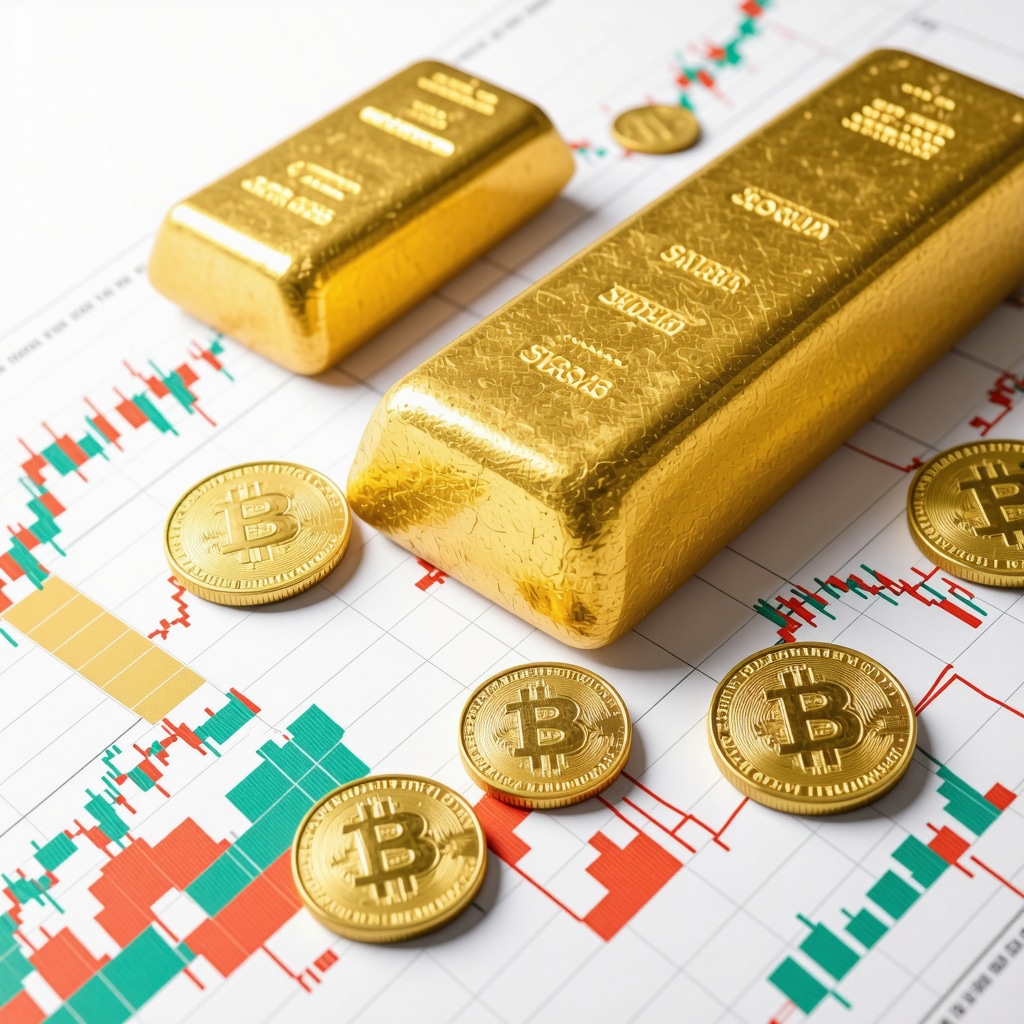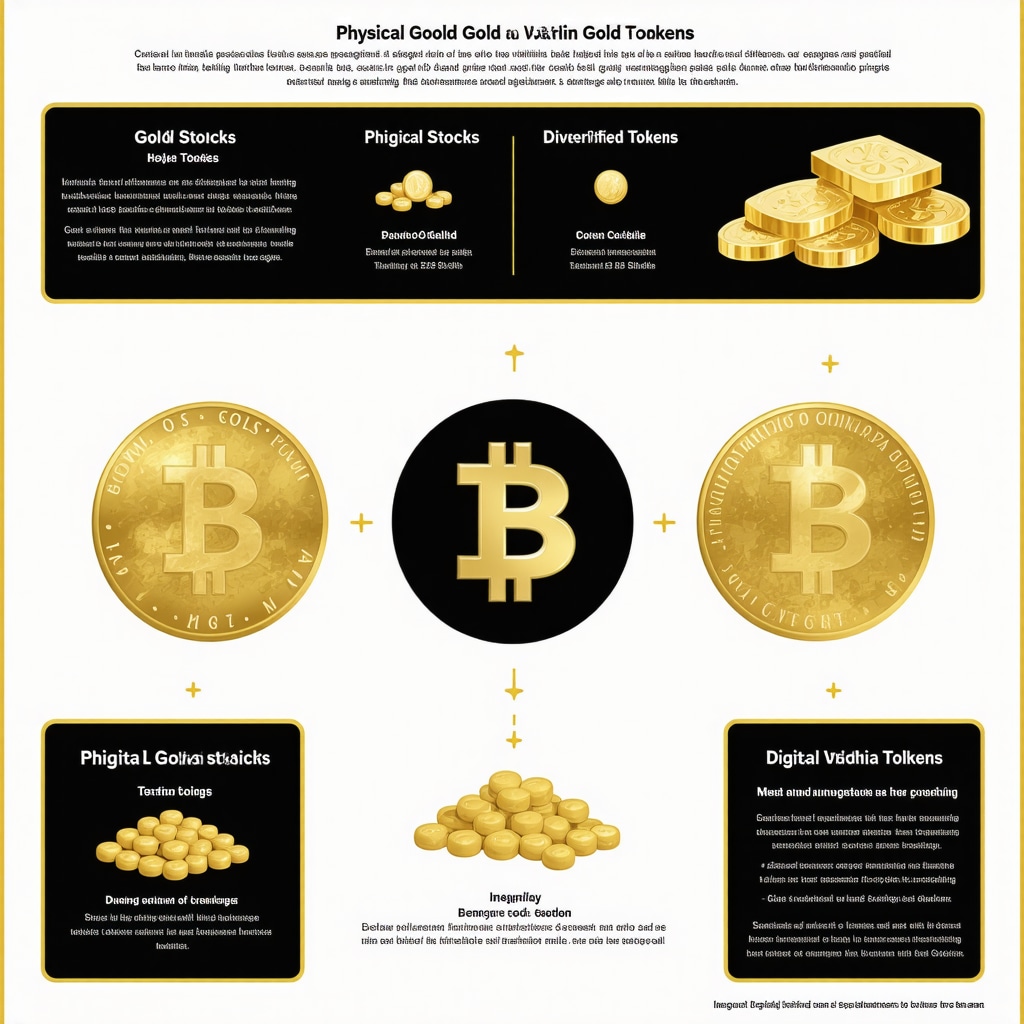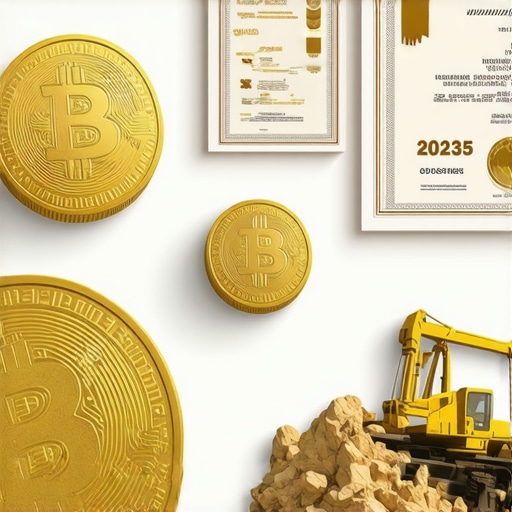The Glittering Debate: Paper Gold or the Real Thing?
Picture this: You’re at a bustling marketplace, the sun catching the shimmer of gold bars stacked like golden bricks, or perhaps scrolling through your brokerage app watching gold mining stocks dance on the screen. Both routes gleam with promise, but which one truly fits your investment style? The age-old tussle between gold stocks and physical gold isn’t just about shiny metals versus paper assets—it’s a kaleidoscope of risk, reward, liquidity, and personal preference.
Why Not Both? The Case for Diversifying Your Gold Portfolio
Before you pick sides, consider the beauty of blending. Physical gold, whether bars or coins, offers tangible security—something you can hold, store, and admire. It’s the ultimate hedge against economic turmoil, inflation, and currency fluctuations. Yet, it carries storage and insurance costs and can be less liquid when you need a quick exit. On the flip side, gold stocks and ETFs provide liquidity, potential dividends, and the thrill of market dynamics, but come with company-specific risks and volatility.
For newcomers eager to grasp the nuances, a deep dive into various gold investment types can illuminate the pros and cons of each choice.
Is Physical Gold Just a Nostalgic Relic or a Smart Modern Investment?
This question often sparks lively debates among investors. Physical gold resonates with those craving a tangible asset immune to digital glitches and market blackouts. It’s a fortress in a storm, a legacy passed down generations. Yet, in our fast-paced financial world, some argue it’s less practical than gold stocks that can be traded instantly and offer growth through company performance.
Reflecting on my own journey investing in gold, I recall the reassuring heft of a gold coin during the 2008 financial crisis—an emotional anchor when markets roiled unpredictably. However, my gold mining stocks portfolio allowed me to capitalize during market rebounds. The dual approach, tailored to one’s appetite for risk and liquidity needs, is often the wisest path.
Expert Insight: What the Pros Say
According to the World Gold Council, physical gold remains a cornerstone for portfolio diversification, especially during economic uncertainty, while gold stocks can amplify returns but carry higher risk.World Gold Council, Gold Investment Outlook 2024 This nuanced view underscores the importance of balancing your gold investments to suit your personal financial goals.
If you’re intrigued by the strategic interplay between physical gold and paper gold, why not share your thoughts or experiences in the comments? Your story might just help someone else find their golden path.
Understanding the Nuances: Storage, Security, and Liquidity in Gold Investments
When deciding between physical gold and gold stocks, the practical aspects of storage and liquidity come to the forefront. Physical gold, while offering unmatched tangibility, demands secure storage solutions—be it a safe deposit box or professional vault services—which introduces ongoing costs and sometimes logistical challenges. This contrasts starkly with gold stocks or ETFs, which offer immediate liquidity and ease of transaction, accessible at the click of a button through financial platforms.
However, this convenience comes with market volatility risks. Gold stocks are influenced not only by gold prices but also by the operational performance and geopolitical factors affecting mining companies. For investors prioritizing immediate access and potential dividend income, paper gold can be alluring, yet it requires a keen eye on market trends and corporate health.
When Does Physical Gold Outshine Gold Stocks?
Physical gold often proves invaluable during periods of extreme economic distress or currency devaluation. Its intrinsic value and universal acceptance make it a reliable store of wealth, immune to counterparty risks inherent in paper assets. For example, in hyperinflation scenarios or banking crises, physical gold can be the ultimate hedge, retaining purchasing power when other assets falter.
Additionally, physical gold can serve as a generational wealth transfer tool, carrying emotional and tangible significance beyond mere financial metrics. This dual role—both as an investment and a legacy asset—distinguishes it sharply from gold stocks, which are primarily financial instruments.
How Can Investors Balance Physical Gold and Gold Stocks to Optimize Portfolio Resilience?
Striking the optimal balance requires a sophisticated understanding of personal risk tolerance, investment horizon, and market conditions. Diversification within gold investments can smooth volatility and provide multiple avenues for capital appreciation and security. Allocating a portion of one’s portfolio to physical gold can act as a stabilizer during market shocks, while gold stocks offer growth potential during bullish cycles.
Experienced investors often recommend a layered approach: maintaining physical gold for long-term safety and leveraging gold stocks or ETFs for tactical market exposure. This strategy aligns with insights shared by the Investopedia Gold Guide, which emphasizes diversification across gold vehicles to harness their complementary strengths.
For those interested in expanding their knowledge on how to effectively navigate gold investments, exploring gold trading tips for beginners can provide a solid foundation.
Considering Market Dynamics: The Influence of Central Banks and Global Demand
Beyond individual investment choices, macroeconomic factors like central bank gold purchases and global demand shifts profoundly impact gold’s market performance. Central banks strategically accumulate gold reserves to diversify foreign exchange holdings, stabilize currencies, and signal economic strength. These moves can trigger significant price movements, affecting both physical gold valuations and mining stock performances.
Moreover, evolving consumer demand in emerging markets, technological applications, and geopolitical tensions shape gold’s supply-demand equilibrium. Staying informed about these dynamics is crucial for investors aiming to anticipate price trends and optimize entry and exit points.
For a detailed analysis of these influences, see how central bank gold purchases affect market dynamics.
Have you balanced physical gold and gold stocks in your portfolio? Share your approach or questions below to contribute to this vibrant investment dialogue!

Decoding the Subtleties: Tax Implications and Regulatory Nuances of Gold Investments
Beyond market dynamics and portfolio balance, an often underappreciated facet influencing gold investment decisions is the complexity of tax treatment and regulatory frameworks. Physical gold, typically classified as a collectible or capital asset in many jurisdictions, can attract differing capital gains tax rates compared to gold stocks or ETFs, which are treated as securities. For instance, in the United States, physical gold is subject to a maximum 28% capital gains tax rate under IRS Section 1(h)(4). Conversely, gains from gold mining stocks align with standard long-term capital gains rates, which can be lower depending on the investor’s tax bracket.
Moreover, regulatory constraints governing the purchase, storage, and sale of physical gold vary internationally, affecting liquidity and compliance costs. Some countries impose import/export restrictions or require licensing for significant physical gold transactions, whereas paper gold is generally traded freely on regulated exchanges. Navigating these layers demands an astute understanding not only of investment fundamentals but also of jurisdiction-specific legal landscapes.
Harnessing Quantitative Models: Portfolio Optimization Techniques for Gold Allocation
For the quantitatively inclined investor, integrating gold into a diversified portfolio transcends simple asset allocation heuristics. Modern portfolio theory (MPT) and advanced optimization algorithms can quantify the risk-return trade-offs between physical gold and gold equities. By leveraging historical price volatility, correlation matrices, and expected returns, investors can employ mean-variance optimization to determine the proportion of physical gold and gold stocks that minimize portfolio variance while targeting desired returns.
Further, scenario analysis incorporating macroeconomic shocks, inflation spikes, and geopolitical tensions can stress-test portfolio resilience. Incorporating gold in its dual forms often serves as a natural hedge against tail risks, especially when traditional assets falter.
For example, a study published by the Journal of Banking & Finance highlights how tactical shifts between physical gold and mining stocks can enhance risk-adjusted returns in volatile environments.
How do tax considerations impact the decision between investing in physical gold versus gold stocks for high-net-worth individuals?
High-net-worth investors face intricate tax planning challenges when allocating capital to gold assets. Physical gold’s collectible status often triggers higher capital gains taxes, which can affect after-tax returns significantly. Meanwhile, gold stocks, treated as equities, may benefit from preferential tax treatments like qualified dividends and long-term capital gains rates. Additionally, estate planning mechanisms can differ: physical gold is tangible and may require special valuation for inheritance tax, whereas gold stocks can be smoothly transferred within financial accounts.
Therefore, comprehensive tax consultation becomes indispensable. Tailoring investment strategies to align with tax efficiency, estate goals, and liquidity requirements can optimize wealth preservation and growth simultaneously.
Technological Innovations: The Role of Blockchain and Digital Gold Tokens
Emerging technologies are reshaping how investors access and manage gold investments. Digital gold tokens, underpinned by blockchain technology, offer a hybrid model combining the tangibility of physical gold with the liquidity and accessibility of paper assets. These tokens represent ownership of allocated physical gold stored in audited vaults, enabling fractional ownership, 24/7 trading, and seamless cross-border transfers.
This innovation addresses traditional physical gold challenges like storage costs and illiquidity while maintaining a direct link to the metal’s intrinsic value. However, investors must scrutinize the custodianship, regulatory compliance, and counterparty risks associated with digital gold platforms.
For a comprehensive overview of this evolving space, see the Goldman Sachs report on digital gold assets.
As the gold investment landscape evolves, staying informed and adaptable is paramount. If you’re curious about integrating these advanced strategies into your portfolio or have experiences with digital gold, don’t hesitate to engage with our community below—your insights could illuminate paths for fellow investors.
Tax Strategy and Regulatory Labyrinth: Decoding Gold Investment Complexities for the Discerning Investor
Investing in gold is not solely a matter of choosing between physical bullion and mining stocks; it also demands a nuanced understanding of tax ramifications and regulatory frameworks that can profoundly influence net returns. For many investors, especially high-net-worth individuals, the differential tax treatment between physical gold and gold equities is a critical factor. Physical gold, often categorized as a collectible asset, can attract capital gains tax rates as high as 28% in the United States under IRS Section 1(h)(4), whereas gold mining stocks and ETFs are generally taxed at lower long-term capital gains rates and may offer qualified dividends.IRS Publication 550 Moreover, international jurisdictions impose varied regulatory restrictions and compliance costs on physical gold transactions that affect liquidity and portfolio flexibility. This complexity necessitates strategic tax planning and legal consultation to optimize after-tax wealth preservation and intergenerational transfer efficiency.
Leveraging Quantitative Portfolio Models: Optimizing Gold Allocation for Risk-Adjusted Returns
For investors with an analytical bent, embedding gold within a broader portfolio strategy can be enhanced through quantitative methods such as mean-variance optimization and scenario stress-testing. These approaches utilize historical volatility data, correlation coefficients, and expected returns to calibrate the ideal balance of physical gold and gold equities, thereby minimizing portfolio variance while targeting specific return benchmarks. Advanced models factor in macroeconomic shocks including inflation surges and geopolitical crises to evaluate how dual gold exposure may serve as a robust hedge against tail risks.Journal of Banking & Finance, 2020 This sophisticated allocation approach transcends traditional heuristics, empowering investors to refine their gold holdings for optimal resilience and growth.
How Can Emerging Digital Gold Tokens Revolutionize Traditional Physical Gold Investment?
Blockchain-based digital gold tokens represent a cutting-edge fusion of physical asset security and digital liquidity—an innovation that could redefine gold investment paradigms. These tokens are backed by allocated physical gold held in audited vaults, enabling fractional ownership, instantaneous 24/7 trading, and seamless cross-border transfers without the logistical burdens associated with storing and insuring physical bullion. However, the nascent nature of this market invites scrutiny regarding custodial integrity, regulatory oversight, and counterparty risks. Investors intrigued by this hybrid model should conduct meticulous due diligence and consider integrating digital gold tokens as a complement to traditional holdings.Goldman Sachs report on digital gold assets
For readers eager to deepen their expertise on secure physical gold ownership, exploring our top tips for securing physical gold investments provides invaluable guidance. Likewise, to master the art of navigating gold market volatility, our gold trading tips for beginners offer a pragmatic starting point.
What’s your perspective on balancing traditional and digital gold investments? Share your insights and questions below to enrich this evolving conversation and empower fellow investors navigating the multifaceted world of gold.

Expert Insights & Advanced Considerations
The Strategic Value of Diversification Between Physical and Paper Gold
Top-tier investors recognize that blending physical gold with gold stocks or ETFs optimizes portfolio resilience. Physical gold acts as a tangible safeguard during systemic shocks, while gold equities provide market-driven growth and dividend income. Balancing these assets requires adapting allocations to evolving macroeconomic and geopolitical contexts, ensuring both liquidity and security.
Tax Efficiency as a Critical Investment Lever
Understanding the distinct tax treatments of physical gold versus gold stocks is paramount, particularly for high-net-worth individuals. Physical gold’s classification as a collectible under IRS rules can lead to higher capital gains taxes, whereas gold equities often benefit from lower rates and qualified dividends. Integrating tax planning into investment decisions can significantly enhance after-tax returns and estate planning outcomes.
Leveraging Quantitative Models for Optimal Allocation
Advanced portfolio construction employs mean-variance optimization and scenario analysis to fine-tune gold allocations. By quantifying the risk-return interplay and stress-testing against inflation spikes or geopolitical crises, investors can identify an allocation mix that minimizes volatility while capitalizing on gold’s hedging properties. This data-driven approach outperforms heuristic strategies.
Emerging Role of Blockchain-Backed Digital Gold Tokens
Digital gold tokens represent a frontier innovation, marrying the intrinsic value of physical gold with the liquidity and accessibility of digital assets. This technology enables fractional ownership, seamless trading, and reduced storage burdens. However, prudent investors must conduct rigorous due diligence on custodianship, regulatory compliance, and systemic risks before integrating these tokens into their holdings.
Curated Expert Resources
World Gold Council – Gold Investment Outlook 2024: An authoritative source offering comprehensive market analysis and expert projections shaping gold investment strategies.
Journal of Banking & Finance (2020 Study): Provides empirical research on portfolio optimization techniques involving physical gold and gold equities.
Goldman Sachs Report on Digital Gold Assets: Deep dive into the transformative potential and risks of blockchain-based digital gold tokens.
Investopedia Gold Guide: A practical yet sophisticated resource detailing diversification strategies and the nuances of gold investment vehicles.
BuyingGoldNow Physical Gold Investment Tips: Essential guidance on secure ownership, authenticity verification, and trusted dealers for physical gold acquisition.
Final Expert Perspective
Mastering gold investments today demands a multifaceted approach that integrates physical bullion’s timeless security with the dynamic potential of gold stocks and emerging digital tokens. Navigating tax complexities, regulatory landscapes, and advanced portfolio models empowers investors to craft strategies tailored to evolving market realities. The interplay between these gold assets is not a dilemma but an opportunity for sophisticated diversification and wealth preservation.
Engage with this nuanced conversation by sharing your strategies or questions on balancing gold investments. Dive deeper into trusted resources like secure physical gold ownership and gold trading techniques to refine your expertise and navigate the gold market with confidence.










